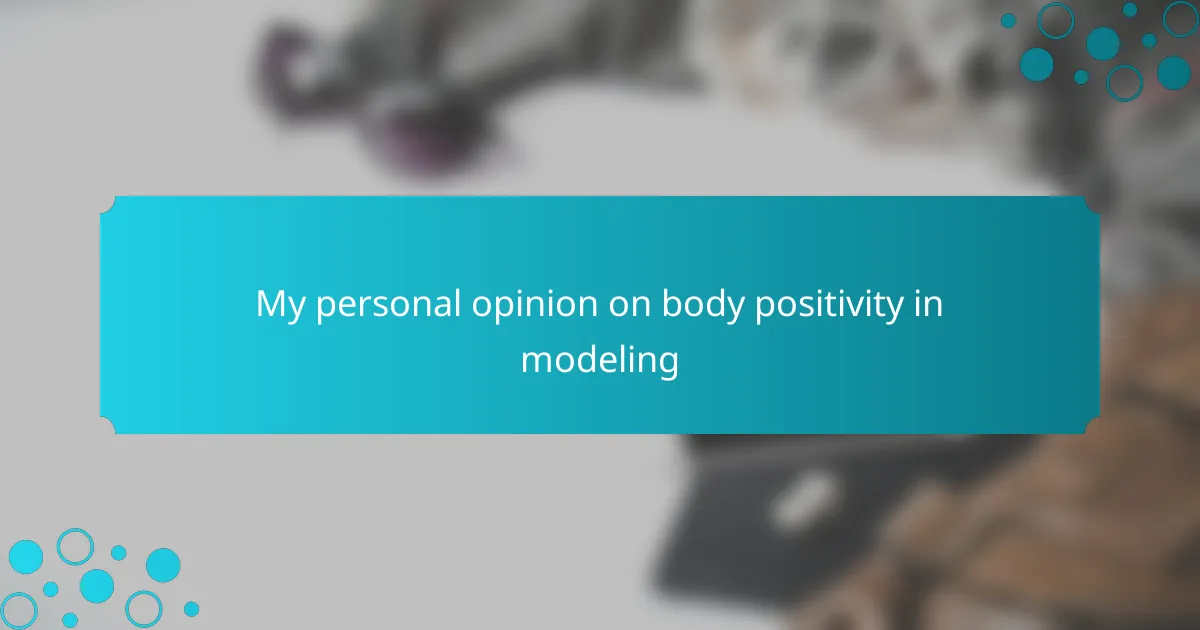Key takeaways
- Fashion design combines creativity and technical skills, with an emphasis on storytelling and emotional expression.
- Collaboration and critique are essential for personal growth and innovation in the creative process.
- Understanding fabric and historical context significantly influences design choices and enhances creativity.
- Persistence, networking, and authenticity are crucial for aspiring fashion designers to thrive in the industry.

Introduction to fashion design
Fashion design is an exhilarating realm where creativity meets critical thought. My time at Central Saint Martins opened my eyes to the intricate layers of this art form, allowing me to blend personal expression with technical skills in ways I hadn’t imagined before. I still remember my first project; the rush of sketching ideas and seeing them come to life on fabric was indescribable.
Throughout my journey, I learned that fashion design isn’t just about trends; it’s about storytelling and conveying emotions. Here are some key aspects that shaped my experience:
- Understanding Fabric: The tactile nature of different materials can inspire designs and change how ideas evolve.
- Sketching Techniques: Learning to communicate ideas visually is essential; my sketches improved significantly during my studies.
- Historical Context: Studying fashion history helped me appreciate the evolution of styles and the cultural significance behind them.
- Collaboration: Working with peers and receiving feedback taught me the value of diverse perspectives in the design process.
- Critique Sessions: Facing critiques was daunting initially, but it fostered growth and resilience in my creative process.
These elements weren’t just lessons; they were building blocks for my identity as a designer.

Importance of fashion education
Fashion education serves as a foundational pillar for aspiring designers, equipping them with the tools to navigate this dynamic industry. I often found myself reflecting on the importance of understanding fabric—how each material tells a unique story and influences my design choices. Can you imagine how different a vision can feel when draped in silk versus cotton? This knowledge not only inspires creativity but also informs practical decisions in construction and wearability.
In my own experience, sketching techniques became vital in expressing concepts that words could not capture. I remember the exhilaration of presenting my sketches to my peers, feeling a mix of vulnerability and excitement. This ability to communicate visually fosters a deeper connection with the audience, allowing a designer’s narrative to resonate beyond mere fabric and thread. Isn’t it fascinating to realize that every stroke can evoke emotion and convey intent?
Moreover, the historical context of fashion reveals the profound impact of culture on design. Each era brings its challenges and innovations, and studying this evolution reminded me of my roots as a designer. I often ask myself how past influences shape my current work. The journey through history not only enriches our designs but also connects us to the narratives of those who came before us, creating a persistent dialogue in the fashion world.

Overview of Central Saint Martins
Central Saint Martins stands out as a powerhouse of creativity and innovation in the fashion world. With a rich history dating back to its establishment in 1854, it has become a breeding ground for some of the most renowned designers. Walking through its halls, I often felt the vibrant energy of various artistic disciplines blending seamlessly, which fueled my passion and ignited my own creativity.
The approach to fashion education at Central Saint Martins is incredibly immersive. From the moment I stepped into the studio, I was encouraged to push boundaries and explore unconventional ideas. I distinctly remember late nights spent draping fabrics and experimenting with silhouettes, moments that brought a thrill to my creativity. It was clear to me that this institution didn’t just teach fashion; it nurtured a mindset of exploration and innovation.
Furthermore, the emphasis on collaboration and critique was paramount in shaping my design philosophy. In group projects, diverse perspectives enriched my experience, highlighting how communal creativity can lead to groundbreaking ideas. I often found myself asking, “What happens when we mix our different backgrounds and ideas?” It was in those moments of collaboration that I saw my designs evolve into something far greater than I could have imagined alone.

Key skills in fashion design
When it comes to fashion design, I’ve found that creativity is paramount. It’s the ability to envision unique pieces that can set a designer apart in a crowded market. I remember the thrill I felt creating my first collection—it was exhilarating to translate ideas into tangible garments. Beyond creativity, strong technical skills in drawing and sewing are essential. I often struggled at first, but with practice, these skills became second nature, allowing me to bring my designs to life more effectively.
Collaboration is another critical skill. Working alongside fellow designers and artisans taught me the value of diverse perspectives. I recall brainstorming sessions where ideas bounced around the room, leading to some of my most innovative designs. This experience reinforced how teamwork can enhance the creative process and lead to fantastic outcomes.
Finally, an understanding of trends and the market is necessary. Fashion is as much about timing as it is about design. Staying informed about industry trends helped me make strategic choices that resonated with buyers and consumers alike. In a way, it felt like having a sixth sense for what would resonate in the ever-evolving fashion landscape.
| Key Skill | Description |
|---|---|
| Creativity | The ability to generate unique ideas and concepts. |
| Technical Skills | Proficiency in design techniques, including drawing and sewing. |
| Collaboration | Working effectively with others to enhance creative output. |
| Trend Awareness | Understanding market trends to create relevant designs. |

My personal journey in fashion
During my time at Central Saint Martins, I often found myself lost in the exhilarating chaos of creativity. I remember a late-night studio session where I draped a vivid blue fabric over a mannequin; the moment it took shape was pure magic. Can you remember that feeling of a surge of inspiration combined with the thrill of creation? For me, it was like stepping into my own world where everything clicked into place.
One of the most pivotal moments in my journey occurred during a collaborative project. We spent hours brainstorming, tossing ideas around like confetti. I can still hear the laughter and excitement in the room as our diverse backgrounds intersected, resulting in designs that were richer and more vibrant than I could have ever conceived on my own. It made me wonder: how powerful can the fusion of different perspectives be? That experience cemented my belief in the strength of teamwork and the beauty of shared creativity.
Looking back, it wasn’t just about learning technical skills—it was about discovering my voice as a designer. I recall sheer determination pushing me through countless late nights, refining my sketches and patterns. Each small victory filled me with pride and reinforced my commitment to this path. Fashion design became more than just a discipline; it evolved into a journey of self-discovery and artistic expression that I cherish deeply.

Challenges faced during the program
During my time at Central Saint Martins, the challenges I faced were as much about personal growth as they were about mastering fashion design. One of the biggest hurdles was the intensity of the coursework. I remember late nights spent in the studio, battling fatigue while trying to meet tight deadlines. It was both exhausting and exhilarating, pushing me to my limits.
Another significant challenge was the competition among peers. It’s quite common for aspiring designers to feel daunted by the incredible talent surrounding them. I often found myself comparing my work to others, which sometimes led to self-doubt. However, I learned to channel that pressure into motivation, pushing myself to innovate and grow.
Finally, the need for critique can be tough to swallow. I vividly recall a time when a professor highlighted flaws in a piece I’d poured my heart into. Initially, it felt disheartening, but I realized that constructive criticism is invaluable in this field. It taught me resilience and the importance of constantly evolving as a designer.
| Challenge | Personal Experience |
|---|---|
| Intense Coursework | Long hours and fatigue led to creative breakthroughs. |
| Peer Competition | Initial feelings of self-doubt turned into motivation. |
| Constructive Critique | Learning to embrace feedback improved my resilience. |

Tips for aspiring fashion designers
Embarking on a journey in fashion design is both exhilarating and daunting. From my experience at Central Saint Martins, I learned that persistence and passion are your greatest allies. I remember sleepless nights spent sketching and perfecting my concepts, each one a step closer to discovering my unique voice in the industry.
Here are some tips for aspiring fashion designers that I wish I had known earlier:
- Embrace Failure: Every mistake is a learning opportunity. I still reflect on my early projects where I stumbled but grew tremendously.
- Network Relentlessly: Build connections with peers and professionals. Those relationships often open unexpected doors.
- Stay Inspired: Surround yourself with art, culture, and the outside world. I often found inspiration in the simplest things, like the way light hit a fabric.
- Be Authentic: Your personal style sets you apart. I made a conscious effort to stay true to my vision, and it made all the difference.
- Practice Hands-On Skills: Don’t shy away from sewing or draping—these skills are vital. I can still recall the satisfaction of bringing my sketches to life through my own two hands.



